| Listing 1 - 9 of 9 |
Sort by
|
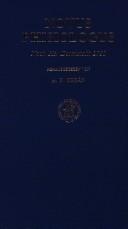
ISSN: 00769754 ISBN: 9004088946 9789004088948 9789004473997 Year: 1989 Volume: 15 Publisher: Leiden New York Köln Brill
Abstract | Keywords | Export | Availability | Bookmark
 Loading...
Loading...Choose an application
- Reference Manager
- EndNote
- RefWorks (Direct export to RefWorks)
The only known text witness of the Novus Phisiologus which was written between 1294 and 1298, in all probability in Germany, is the MS 2780 of the Darmstadt Library. The work cannot, despite its title, be included among the known Latin versions of the Physiologus . In contrast to the old Latin Physiologus this Novus Phisiologus leaves out the trees and stones, but on the other hand treats the animals which it and the Latin Physiologus take on board in the descriptive part but also in the allegorically interpretative part in far more depth and detail than is the case in the Latin Physiologus . The Novus Phisiologus provides a mass of detail, of which the Latin versions of the Physiologus do not even seem to be aware. The Novus Phisiologus is a poem of 1400 lines composed partly of hexameters and partly of couplets, and contains the following parts: Prologus, De homine, De quadrupedibus, De avibus, De reptilibus, De minutis animalibus and De anima.
Neo-Latin literature --- Thematology --- Medieval Latin literature --- Beestenboeken --- Bestiaires --- Bestiaria --- Bestiaries --- Didactic poetry [Latin ] (Medieval and modern) --- Didactische poëzie [Latijnse ] (Middeleeuwse en moderne) --- Latijns leerdicht (Middeleeuws en modern) --- Latijnse didactische poëzie (Middeleeuwse en moderne) --- Latin didactic poetry (Medieval and modern) --- Poésie didactique latine médiévale et moderne --- Didactic poetry, Latin (Medieval and modern) --- Animals --- Middle Ages --- Folklore --- Early works to 1800 --- Poetry
Book
ISBN: 8887027188 9788887027181 Year: 1998 Volume: 10 Publisher: Firenze Sismel-Edizioni del galuzzo
Abstract | Keywords | Export | Availability | Bookmark
 Loading...
Loading...Choose an application
- Reference Manager
- EndNote
- RefWorks (Direct export to RefWorks)
Versification --- Rhetoric --- Didactic poetry, Latin (Medieval and modern) --- Ethics --- Rhétorique --- Poésie didactique latine médiévale et moderne --- Morale --- Early works to 1800 --- Ouvrages avant 1800 --- Poetics --- Marbode, --- Didactic poetry, Latin (Medieval and modern). --- Rhétorique --- Poésie didactique latine médiévale et moderne --- Didactic poetry, Latin (Medieval and modern) - Translations into Italian --- Rhetoric - Early works to 1800 --- Poetics - Early works to 1800 --- Ethics - Early works to 1800 --- Marbode, - Bishop of Rennes, - 1035?-1123 - Translations into Italian --- Marbode, - Bishop of Rennes, - 1035?-1123
Book

ISBN: 2251730133 2251730206 Year: 2004 Volume: 12/19/21 Publisher: Paris Les Belles Lettres
Abstract | Keywords | Export | Availability | Bookmark
 Loading...
Loading...Choose an application
- Reference Manager
- EndNote
- RefWorks (Direct export to RefWorks)
Christian poetry, Latin (Medieval and modern) --- Didactic poetry, Latin (Medieval and modern) --- Monastic and religious life --- Chivalry --- Poésie chrétienne latine (Médiévale et moderne) --- Poésie didactique latine médiévale et moderne --- Vie monastique et religieuse --- Chevalerie --- Literary collections --- Translations into French --- Poetry. --- Anthologies --- Traductions françaises --- Poésie --- Poésie chrétienne latine (Médiévale et moderne) --- Poésie didactique latine médiévale et moderne --- Traductions françaises --- Poésie
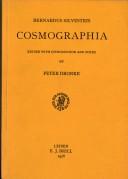
ISBN: 9004057676 9789004057678 Year: 1978 Volume: 53 Publisher: Leiden : E. J. Brill,
Abstract | Keywords | Export | Availability | Bookmark
 Loading...
Loading...Choose an application
- Reference Manager
- EndNote
- RefWorks (Direct export to RefWorks)
Didactic poetry, Latin (Medieval and modern) --- Cosmology, Medieval --- Poetry --- -Didactic poetry, Latin (Medieval and modern) --- Latin didactic poetry, Medieval and modern --- Latin poetry, Medieval and modern --- Medieval cosmology --- Poetry. --- Didactic poetry, Latin (Medieval and modern). --- Cosmologie médiévale. --- Cosmology, Medieval - Poetry --- Cosmography --- Philosophy --- Manuscripts, Latin --- Poésie didactique latine médiévale et moderne. --- Cosmologie médiévale --- Cosmographie --- Philosophie --- Manuscrits latins --- Philosophy. --- Manuscripts, Latin. --- Cosmography. --- Cosmology, Medieval. --- Philosophers --- Bernard Silvestris, --- Cosmographia (Bernard Silvestris). --- France.
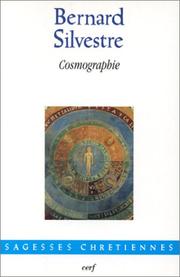
ISSN: 11402865 ISBN: 2204057258 9782204057257 Year: 1998 Publisher: Paris Cerf
Abstract | Keywords | Export | Availability | Bookmark
 Loading...
Loading...Choose an application
- Reference Manager
- EndNote
- RefWorks (Direct export to RefWorks)
Cosmology, Medieval --- Didactic poetry, Latin (Medieval and modern) --- Cosmologie médiévale --- Poésie didactique latine médiévale et moderne --- Poetry --- Translations into French --- Poésie --- Traductions françaises --- Bernard Silvestris, --- Latin didactic poetry, Medieval and modern --- Latin poetry, Medieval and modern --- Medieval cosmology --- Cosmologie médiévale --- Poésie didactique latine médiévale et moderne --- Poésie --- Traductions françaises --- Didactic poetry, Latin (Medieval and modern) - Translations into French --- Cosmology, Medieval - Poetry
Book
ISBN: 9788884500762 8884500761 Year: 2003 Volume: 19 Publisher: Tavarnuzze (Firenze) : SISMEL edizioni del Galluzzo,
Abstract | Keywords | Export | Availability | Bookmark
 Loading...
Loading...Choose an application
- Reference Manager
- EndNote
- RefWorks (Direct export to RefWorks)
Knights and knighthood --- Epic poetry, Latin (Medieval and modern) --- Didactic poetry, Latin (Medieval and modern) --- Chevaliers et chevalerie --- Poésie épique latine médiévale et moderne --- Poésie didactique latine médiévale et moderne --- Poetry. --- Poésie --- Bayerische Staatsbibliothek. --- Ruodlieb. --- Romances, Latin (Medieval and modern) --- Poetry --- Romances, Latin (Medieval and modern). --- Didactic poetry, Latin (Medieval and modern). --- Epic poetry, Latin (Medieval and modern). --- Poésie épique latine médiévale et moderne --- Poésie didactique latine médiévale et moderne --- Poésie --- Knights and knighthood - Poetry
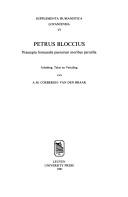
ISBN: 9061864356 9789061864356 Year: 1991 Volume: 6 Publisher: Louvain-la-Neuve Leuven Peeters Presses universitaires de Louvain
Abstract | Keywords | Export | Availability | Bookmark
 Loading...
Loading...Choose an application
- Reference Manager
- EndNote
- RefWorks (Direct export to RefWorks)
Neo-Latin literature --- Bloccius, Petrus --- Filosofie --- Philosophie --- Didactic poetry, Latin (Medieval and modern) --- Conduct of life --- Ethics --- Poésie didactique latine médiévale et moderne --- Poetry. --- -Ethics --- -Academic collection --- Deontology --- Ethics, Primitive --- Ethology --- Moral philosophy --- Morality --- Morals --- Philosophy, Moral --- Science, Moral --- Philosophy --- Values --- Ethics, Practical --- Personal conduct --- Philosophical counseling --- Latin didactic poetry, Medieval and modern --- Latin poetry, Medieval and modern --- Poetry --- Didactic poetry, Latin (Medieval and modern). --- Poésie didactique latine médiévale et moderne --- Academic collection --- Etiquette for children and teenagers --- History --- 16th century --- Conduct of life - Poetry. --- Ethics - Poetry. --- Pedagogie --- Histoire --- Bloccius (petrus) --- 16e sieclr --- 16e siecle
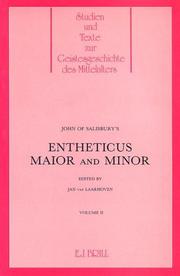
ISBN: 9004078118 9004078126 9789004078116 Year: 1987 Volume: 17 Publisher: Leiden Köln Brill
Abstract | Keywords | Export | Availability | Bookmark
 Loading...
Loading...Choose an application
- Reference Manager
- EndNote
- RefWorks (Direct export to RefWorks)
Classical Latin literature --- Didactic poetry, Latin (Medieval and modern) --- Poésie didactique latine médiévale et moderne --- Translations into Dutch --- Translations into English --- -Translations into Dutch --- -Middle Ages --- -Philosophy, Medieval --- -#GROL:SEMI-1-05'11' --- Medieval philosophy --- Scholasticism --- Dark Ages --- History, Medieval --- Medieval history --- Medieval period --- Middle Ages --- World history, Medieval --- World history --- Civilization, Medieval --- Medievalism --- Renaissance --- Latin didactic poetry, Medieval and modern --- Latin poetry, Medieval and modern --- Poetry --- History --- Poésie didactique latine médiévale et moderne --- Philosophy, Medieval --- #GROL:SEMI-1-05'11' --- Jean de Salisbury. Entheticus de dogmate philosophorum. --- Johannes van Salisbury. Entheticus de dogmate philosophorum. --- Didactic poetry, Latin (Medieval and modern) - - Translations into Dutch --- -Classical Latin literature
Book
ISBN: 9789004256910 9789004268357 9004268359 9004256911 Year: 2014 Volume: 47 Publisher: Leiden, Netherlands : Brill,
Abstract | Keywords | Export | Availability | Bookmark
 Loading...
Loading...Choose an application
- Reference Manager
- EndNote
- RefWorks (Direct export to RefWorks)
The Cosmographia is one of the most inventive and enigmatic works of medieval literature. Mark Kauntze argues that this allegory of creation is best understood as a product of the vibrant intellectual culture of twelfth-century France. Bernard Silvestris established the authority of his treatise by imitating those ancient philosophers and poets who were assiduously studied in the contemporary schools. But he also revised and updated them, to develop a compelling intervention into twelfth-century debates about man's place in nature and the relationship between theology and natural science. Using a wealth of manuscript evidence, Kauntze reconstructs the school context in which Bernard worked, and shows how the Cosmographia itself became an object of scholarly annotation and imitation in the later Middle Ages.
Bernardus Silvestris --- Literature, Medieval --- Didactic poetry, Latin (Medieval and modern) --- Cosmology, Medieval --- Littérature médiévale --- Poésie didactique latine médiévale et moderne --- Cosmologie médiévale --- History and criticism. --- History and criticism --- Poetry. --- Histoire et critique --- Histoire et critiuqe --- Poésie --- Bernard Silvestris, --- Tours (France) --- Intellectual life --- Vie intellectuelle --- Littérature médiévale --- Poésie didactique latine médiévale et moderne --- Cosmologie médiévale --- Poésie --- Medieval cosmology --- Latin didactic poetry, Medieval and modern --- Latin poetry, Medieval and modern --- Bernard, --- Bernardo Silvestre, --- Bernardus Silvestris, --- Bernardus Sylvester, --- Silvester, Bernard, --- Silvestre, Bernardo, --- Silvestris, Bernardus, --- Criticism and interpretation. --- Turonum (France) --- Augusta Turonum (France) --- Caesarodunum (France) --- Caesarodunum Turonum (France) --- Martinopolis (France) --- Thoronus (France) --- Thuro (France) --- Thuronum (France) --- Torenorum Civitas (France) --- Toronus (France) --- Turenorum Civitas (France) --- Turonensium Civitas (France) --- Turones (France) --- Turonia (France) --- Turonica Civitas (France) --- Turonium (France) --- Turonorum Civitas (France) --- Civitas Turonum (France) --- Ville de Tours (France) --- Tours (Indre-et-Loire, France) --- Intellectual life. --- Medieval Latin literature
| Listing 1 - 9 of 9 |
Sort by
|

 Search
Search Feedback
Feedback About
About Help
Help News
News